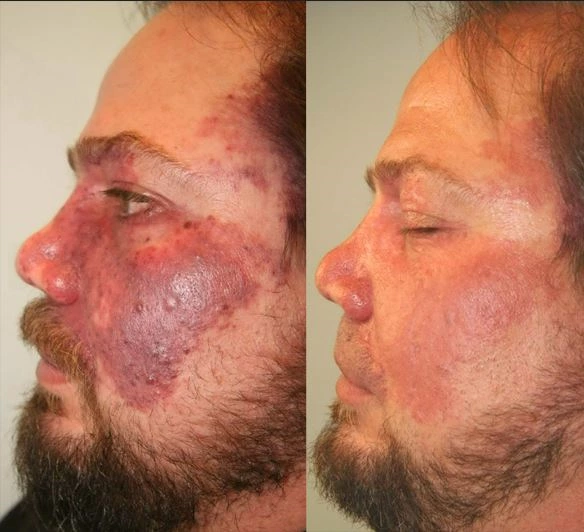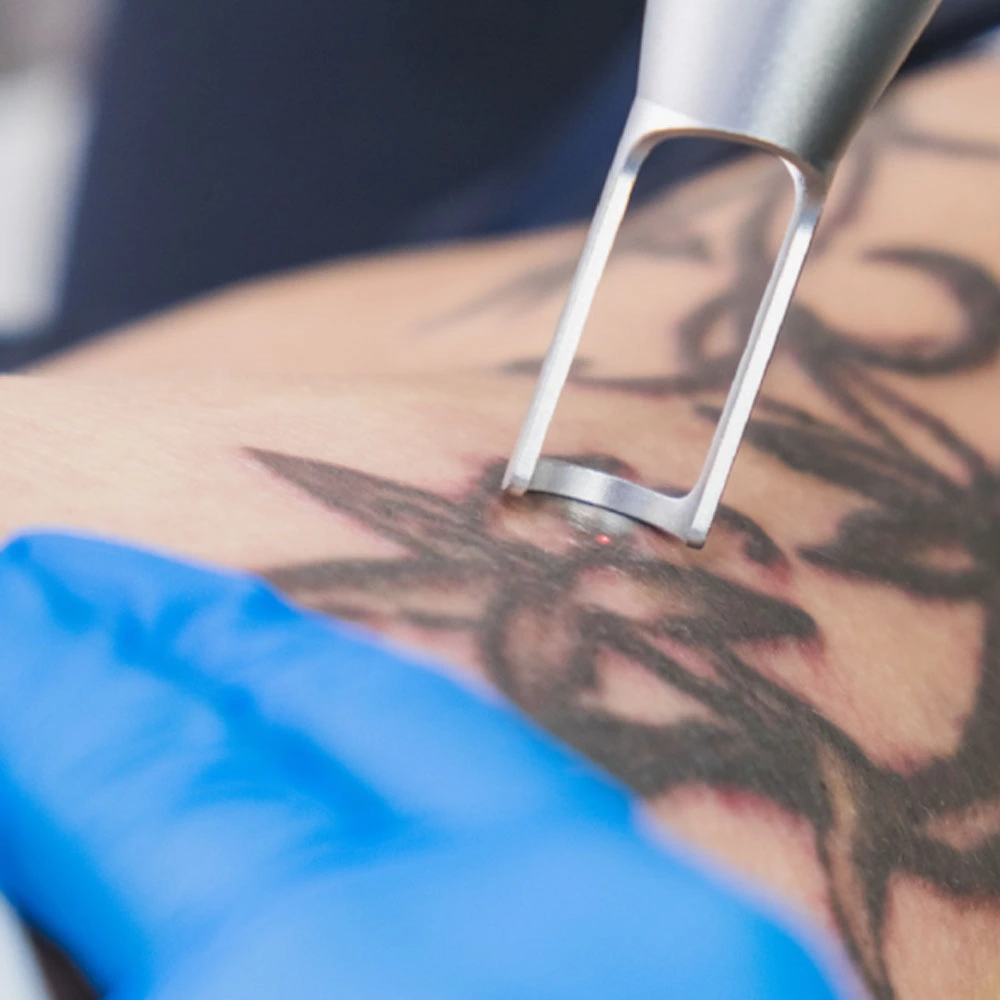

Civatte's poikiloderma is a variation of telangiectasia, commonly occurring on the neck and upper chest, mainly due to cumulative exposure to ultraviolet radiation and combined photosensitivity to var

As one of the most common vascular diseases, the main cause of its onset is increased pressure within the venous lumen, leading to dilatation and tortuosity of the vein wall due to decreased elasticity.

Venous lake can occur at any age but is more common in middle-aged and elderly individuals on exposed areas of the skin and mucous membranes, such as the head, neck, and lips. The lesions appear as de

Erythematous acne essentially refers to dysregulation of skin blood vessels. Generally, it is considered not as a disease but as a constitutional type manifested by many people, characterized by capil

Progressive capillary hemangioma is a vascular disease characterized by proliferation of endothelial cells within dilated capillaries. The etiology is unclear, first reported by Hutchinson in 1889. It

Venous malformations refer to congenital and acquired venous diseases involving large-caliber veins, excluding port-wine stains (microvenous malformations).

Angiokeratoma, also known as angio-keratosis, is a skin disease characterized by capillary dilation in the upper dermis and hyperkeratosis of the epidermis. I. Causes and Pathogenesis The causes and p

Spider telangiectasia, also known as spider nevus, is an acquired benign vascular disease with an incidence of 10% to 15% in healthy adults and children. Most cases are unrelated to dermatological or

Telangiectasia refers to superficial skin blood vessels that are visible to the naked eye. 10% to 15% of adults and children have noticeable facial telangiectasia. I. Causes and Pathogenesis All types

Cherry Angioma (cherry angioma), also known as senile angioma, is a small localized red spot or papule composed of dilated blood vessels. I. Causes and Pathogenesis Currently, little is known about th

Cavernous Hemangioma (cavernous hemangioma) is a low-flow vascular malformation present at birth, also known as venous malformation. Most venous malformations are cavernous, hence the name. There is ongoing debate about the nature of cavernous hemangiomas, but recent research increasingly suggests they are congenital vascular anomalies.

Strawberry hemangiomas are common benign tumors in newborns, composed of capillaries and small veins. They appear within a month of birth, often growing rapidly before gradually regressing by age 5-9. Treatment may not be needed unless complications like ulcers or infections occur. Options include glucocorticoids, interferons, sclerotherapy, surgery, and lasers (PDL, Nd, dual-wavelength). Diagnosis relies on clinical presentation and can be confirmed with biopsies if unclear. Post-treatment care is essential to manage side effects and promote healing.

Port Wine Stain (PWS) , also known as nevus flammeus or capillary malformation, is a relatively flat and rarely raised plaque composed of dilated capillaries. It is a congenital capillary malformation.

The Basics of Acne: Causes and Triggers Acne is a common skin condition that affects millions of people worldwide, transcending age, gender, and ethnicity. Understanding its causes and triggers can he

Sometimes people get a permanent tattoo then later decide they no longer want it. Life situations change or maybe the tattoo just didn’t come out as hoped. Removing a tattoo isn’t as easy as it might